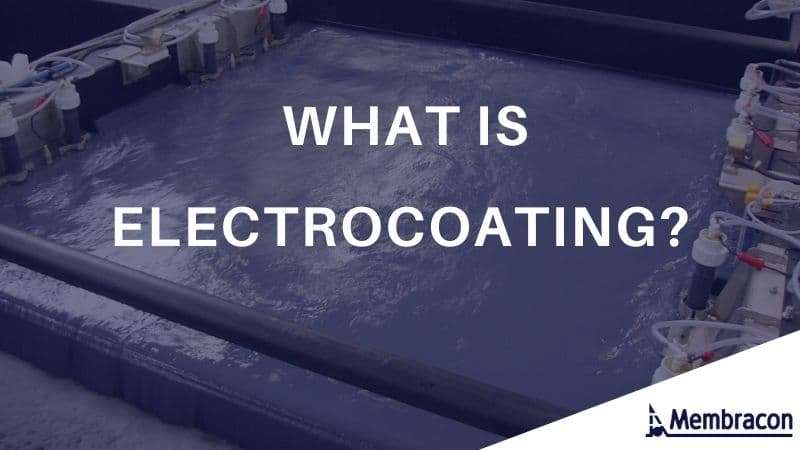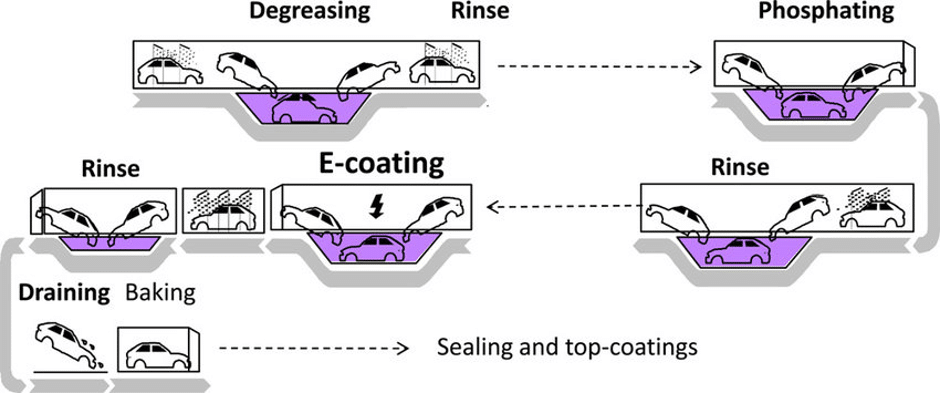
What Is Electrocoating?
Electrocoating is used globally with many of the items you use on a daily basis being painted using this process.
This blog will run through exactly what electrocoating is and a brief overview of the electrocoating process.
What Is Electrocoating?
Electrocoating, sometimes known as e-coating, is a method of applying paint to a substrate in a paint bath, sometimes known as an e-coat tank. Electricity charges the particles to deposit paint equally onto the metallic parts, the charge is determined by voltage.
There are two main types of e-coat process tanks that are used across a variety of industries. The first of these is a transporter system, where a substrate load would be submerged into the tank.
It’s then left for a period of time while an electrical voltage is applied, then being lifted out and taken to the next process tank in the line.
The other main system is an inline e-coat tank. In this process, the substrate will continuously travel along a conveyor submersing the product into the paint tank and removing in a continuous motion. This process is more efficient as the production line never needs to stop.
Industries use electrocoating for a variety of advantages, including cost efficiencies, line productivity and environmental gains.
E-coating can paint high volumes of parts with a unique advantage of coating every surface submerged into the tank inside and out. The high production efficiency coupled with advanced quality results in lower unit costs, making it one of the most popular industrial processes to use.
The Electrocoating Process
The E-coat process is best described as a cross between plating and painting. A metal part is immersed in a pure water-based solution containing a paint emulsion.
An electric voltage is then applied to the substrate, from a rectifier to tubular anode cells within the tank causing the paint emulsion to stick onto the part. All of their parts within the paint bath can be painted both inside and out; any area the liquid can reach on a metal surface will get coated.
The thickness of the coat can be determined by the voltage and current applied to the part. Areas of high voltage build a coating that becomes an insulator, allowing lower voltage areas to build up.
This painted surface then travels through to a curing oven where the paint is baked onto the part.
With the nature of the process being able to coat every surface, it forms an extremely good base layer.
These parts can then withstand aggressive environmental conditions for long periods of time. It also allows the parts to then be repainted, either wet paint or powder coated for a decorative finish and colour.

Conclusion
To summarise, E-coating is a process that can apply paint to any metal surface, inside and out, while giving the substrate extremely good protection to the elements for long periods of time.
Membracon has worked within all industry sectors and a variety of manufacturers all over the UK and the rest of the world installing and advising on the best ancillary items to use within the e-coating process.
To find out more about the equipment and membranes available for e-coating or to request a quote, get in touch today. Membracon’s experts treat each project separately, only recommending the appropriate equipment that will work for your unique process.
